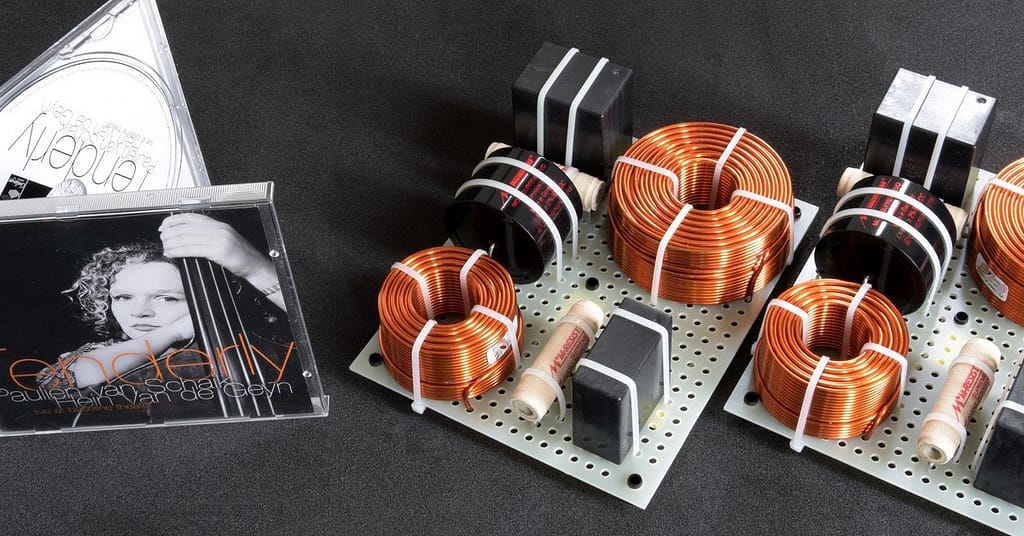PODCAST: explore How works the condenser (capacitor) in the speaker crossover? TIPS AND TRICKS (14.)” provides a beginner-focused explanation of how capacitors function within speaker crossovers. The presenter demonstrates their role in filtering out lower frequencies to protect tweeters from damage, showcasing the audible difference between a tweeter connected directly to an amplifier versus one connected via a capacitor. The video also addresses why older, low-quality capacitors can fail to protect tweeters at higher volumes, leading to speaker damage. Ultimately, it serves as a practical guide for understanding basic speaker component interaction.

In speaker crossovers, a condenser (also known as a capacitor) acts as a high-pass filter. It allows high-frequency signals to pass through to the tweeter while blocking lower frequencies that could damage it. The capacitor’s value determines the cutoff frequency, which is the point where the filter starts attenuating lower frequencies. [1, 2]
Here’s a more detailed explanation:
- High-Pass Filter: A capacitor in a crossover network is designed to act as a high-pass filter. This means it allows high-frequency signals to pass through to the tweeter while attenuating (reducing the strength of) lower frequencies. [2, 2, 3, 3, 4, 5]
- Frequency Dependence: The capacitor’s behavior is frequency-dependent. It offers less resistance to high-frequency signals, allowing them to pass through, and more resistance to low-frequency signals, effectively blocking them. [1, 1, 6, 6]
- Cutoff Frequency: The cutoff frequency is the point where the capacitor starts significantly reducing the signal’s strength. It’s determined by the capacitor’s capacitance (measured in Farads) and the circuit’s characteristics. [1, 1, 6, 7, 7, 8]
- Tweeter Protection: By blocking low frequencies, the capacitor prevents them from reaching the tweeter, which is typically designed to handle only higher frequencies. Excessive low-frequency signals can damage the tweeter. [1, 1, 2, 2]
- Parallel Capacitors: Connecting capacitors in parallel increases the overall capacitance, which lowers the cutoff frequency. [1, 1]
- Capacitor Types: In crossover networks, film capacitors (also called polypropylene capacitors) are often preferred for their low dielectric absorption and equivalent series resistance (ESR), which are important for audio applications. [7, 7, 9, 9]
- Inductors and Crossovers: Capacitors work in conjunction with inductors (also known as coils) in crossovers. While capacitors act as high-pass filters, inductors act as low-pass filters, allowing low frequencies to pass through and blocking higher frequencies. [5, 5, 10, 10, 11, 12]
[1] https://www.youtube.com/watch?v=HdohiI5kROg
[2] https://www.electrocube.com/pages/capacitors-in-audio-crossover-networks-data-sheet
[3] https://www.youtube.com/watch?v=0rzdOg-F4YY
[4] https://www.quora.com/What-does-a-capacitor-do-in-a-speaker-crossover
[5] https://blog.teufelaudio.com/capacitor-in-loudspeakers-explained/
[7] https://www.soundimports.eu/en/blogs/blog/the-basics-of-crossover-components/
[8] https://www.chokes.com/crossovers-explained.html
[9] https://passive-components.eu/choosing-capacitors-for-crossover-audio-circuits/
[10] https://gr-research.com/inductors/
[11] https://www.parts-express.com/speaker-components/crossover-components
[12] https://www.psaudio.com/blogs/copper/crossover-design-basics